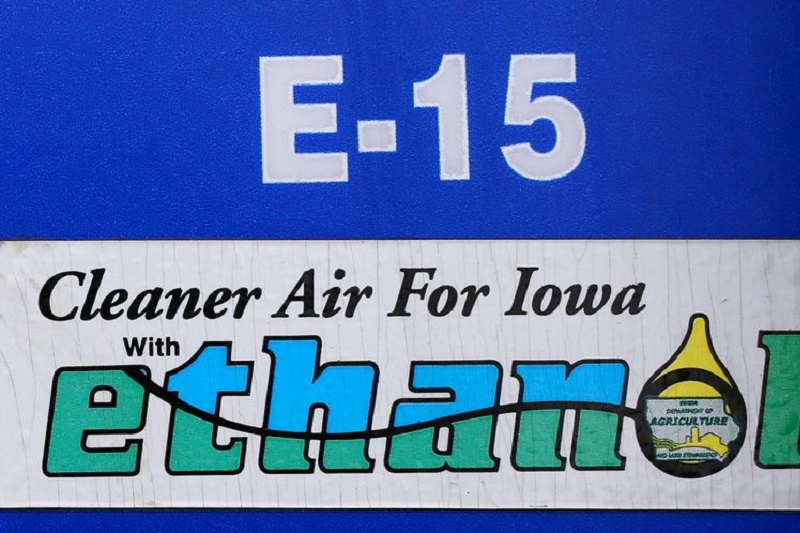By Jarrett Renshaw, Stephanie Kelly and Leah Douglas
(Reuters) – The Biden administration is divided over whether to grant a request from the U.S. biofuel industry that would make it easier for sustainable aviation fuel made from corn-based ethanol to qualify for subsidies under the White House’s signature climate law, according to two sources familiar with the discussions.
The indecision has touched off a lobbying battle between two big stakeholders – Farm Belt backers who view sustainable aviation fuel (SAF) as crucial to ethanol’s growth and environmental advocates who say clearing land to grow crops for fuel is counterproductive to solving global warming.
At issue is a requirement in last year’s Inflation Reduction Act (IRA) that SAF producers seeking tax credits must demonstrate with an approved scientific model that their fuel generates 50% less greenhouse gas emissions over its lifecycle than petroleum fuel.
Midwest ethanol producers have asked the Biden administration to adopt a model that would enable ethanol-based SAF to qualify while environmentalists want standards that would favor inputs like used cooking oil and animal fat.
Officials at the Environmental Protection Agency and agriculture and energy departments are divided over which model to use, and White House Climate Czar John Podesta is seeking to resolve the question, according to the sources.
A White House official said the administration’s SAF policy seeks to include ethanol, but “we are trying to seek alignment with stakeholders on the question of modeling.”
The EPA, Department of Agriculture and Department of Energy did not respond to requests for comment.
The administration’s decision will determine who benefits from billions of dollars in subsidies expected under the program. The administration is meant to announce a decision by September.
The Biden administration has a goal to supply at least 3 billion gallons of SAF per year by 2030 as part of its broader effort to decarbonize the transport sector. By 2050, it hopes the SAF industry – which is now miniscule – will meet 100% of aviation fuel demand at around 35 billion gallons per year.
LAND USE
The biofuels lobby, which has found allies among commercial airlines and farm state lawmakers, is arguing that the Biden administration cannot meet those targets if it blocks ethanol as an SAF feedstock and would hurt farmers in the meantime.
“Barring the aviation industry from embracing the most accessible SAF options will not only deprive American farmers of the chance to contribute to a new clean energy market, but also severely delay adoption of promising low-emission energy sources,” a bipartisan group of lawmakers wrote to Treasury Secretary Janet Yellen on Friday.
Environmental groups including the Environmental Defense Fund and Friends of the Earth, meanwhile, say including ethanol would undermine the administration’s climate goals because clearing land for fuel crops releases carbon from the soil.
Biden, who has made tackling climate change a central pillar of his administration, has raised expectations among farmers.
“Mark my words: the next 20 years, farmers are going to be providing 95% of all the sustainable airline fuel,” Biden told a crowd in Maine last week.
The IRA says producers must use the Carbon Offsetting and Reduction Scheme for International Aviation (CORSIA) developed by the International Civil Aviation Organization, or a “similar methodology”, for measuring SAF’s emissions.
The ethanol industry wants to use the U.S. Department of Energy’s Greenhouse Gases, Regulated Emissions and Energy Use in Technologies (GREET) model.
CORSIA is more likely than GREET to exclude ethanol-based SAF from the subsidy program because of the way it evaluates the emissions of so-called indirect land-use change, the displacement of existing farmland or natural vegetation to grow crops.
The administration is considering a compromise that would incorporate certain aspects of the GREET system into a new methodology, a source familiar with the matter said. However, it was unclear how that would work.
Read the full article here










